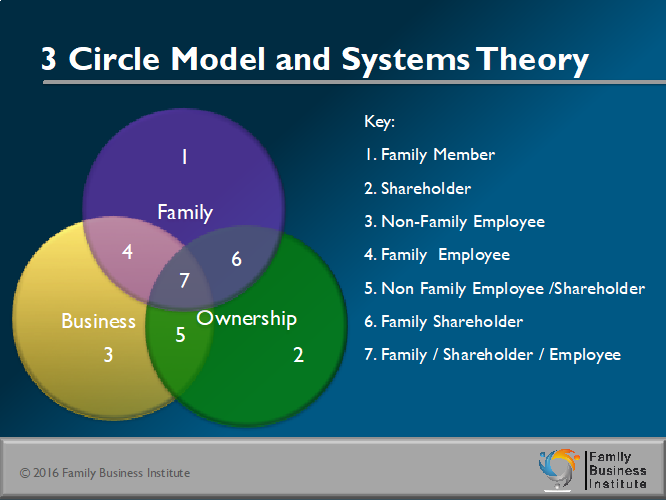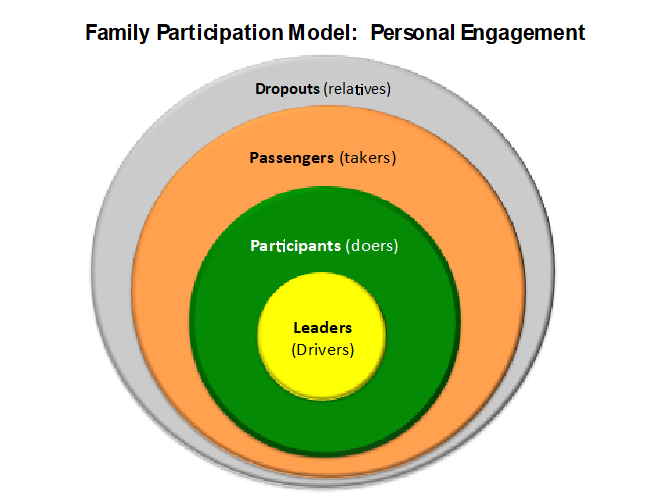 A “system” describes any collection of component parts that inter-connect and inter-act.
A “system” describes any collection of component parts that inter-connect and inter-act.
The traditional 3 Circle Model of Family Business describes family business systems, and locates each participant’s place in it, in a formal, legal sense. This neat way of classifying things, which works well for lawyers and accountants, is subject to the following observations:
- Every family is a natural and complex system of personalities, emotion, histories, capabilities, attitudes, motivations and values. Its primary purpose is to promote the survival of the (human) species, and particularly the success of its own family members.
- Every business is an imagined, artificial, complex system created for commercial purposes. They comprise the people, processes, capital, resources and know-how, primarily used to generate profits and increase shareholder value.
- People are a varying mix of rational thinking and emotional doing. This makes them inherently complicated and relatively unpredictable. Therefore, every family is a uniquely constructed, human pressure cooker.
Conclusion: Put all 3 elements together (individuals, family and business) and you get a very complex system of inter-related, and inter-dependent, components. Because humans drive each part of the system, rational, irrational and emotional influences can have huge impacts.
Participation in the Family System

Participation in the family system by thought, actions, and/or emotional engagement, varies from individual to individual, and from family unit to family unit.
Engagement levels can range from passively relational, to purely social, to actively familial, to positively professional (working together in some part of the family enterprise).
Each level of engagement is a matter of free personal choice, up to a point. Although relationships are forever – at least, barring legal divorce – families also have the ability (and perhaps the right?) to determine their internal levels of interaction, including distribution of benefits to family members, based on their unique values systems.
Hence, they may have their own rules for the differential treatment of family members, from most to least engaged. This can translate into policies on who qualifies for cash distributions from family trusts; who can receive support from an education trust; who can direct where the family’s philanthropic efforts should be focussed, and so on.
For help working with Family Systems, please call, or contact: The Solutionist Group.


